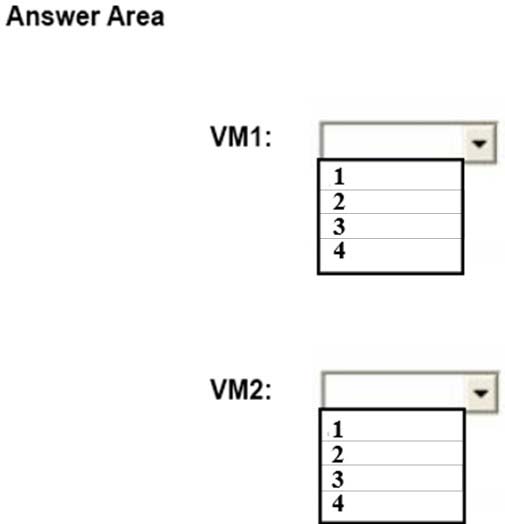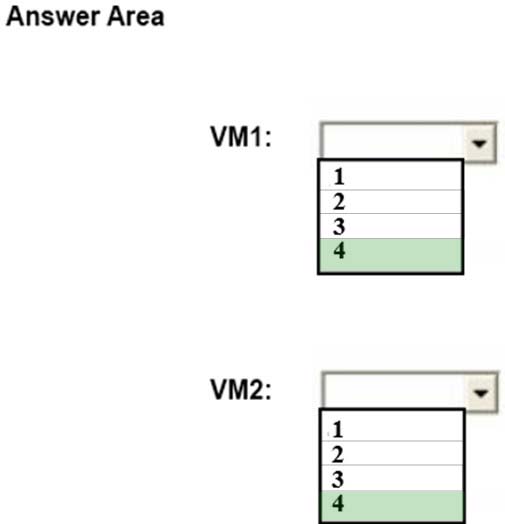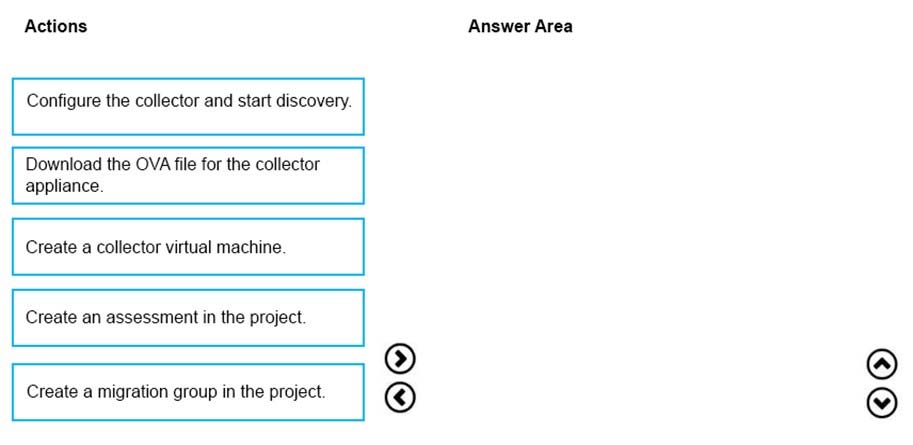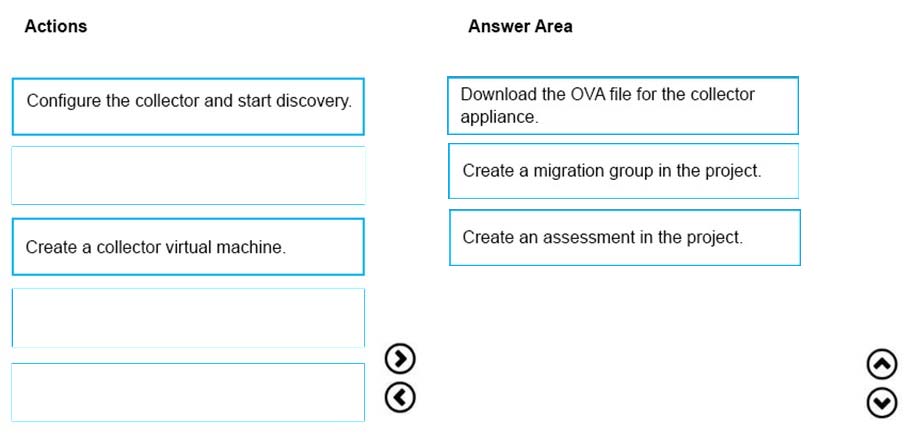

HOTSPOT -
You have an Azure Migrate project that has the following assessment properties:
Target location: East US -
✑ Storage redundancy: Locally redundant.
✑ Comfort factor: 2.0
✑ Performance history: 1 month
✑ Percentile utilization: 95th
✑ Pricing tier: Standard
✑ Offer: Pay as you go
You discover the following two virtual machines:
✑ A virtual machine named VM1 that runs Windows Server 2016 and has 10 CPU cores at 20 percent utilization
✑ A virtual machine named VM2 that runs Windows Server 2012 and has four CPU cores at 50 percent utilization
How many CPU cores will Azure Migrate recommend for each virtual machine? To answer, select the appropriate options in the answer area.
NOTE: Each correct selection is worth one point.
Hot Area:
Correct Answer:

Box 2: 4 -
4 *0.50 * 0.95* 2 = 3.8
Note: The number of cores in the machines must be equal to or less than the maximum number of cores (128 cores) supported for an Azure VM.
If performance history is available, Azure Migrate considers the utilized cores for comparison. If a comfort factor is specified in the assessment settings, the number of utilized cores is multiplied by the comfort factor.
If there's no performance history, Azure Migrate uses the allocated cores, without applying the comfort factor.
References:
https://docs.microsoft.com/en-us/azure/migrate/concepts-assessment-calculation
You have an on-premises network that contains a Hyper-V host named Host1. Host1 runs Windows Server 2016 and hosts 10 virtual machines that run Windows
Server 2016.
You plan to replicate the virtual machines to Azure by using Azure Site recovery.
You create a Recovery Services vault named ASR1 and Hyper-V site named Site1.
You need to add Host1 to ASR1.
What should you do?
Correct Answer:
A
🗳️
Download the Vault registration key. You need this when you install the Provider. The key is valid for five days after you generate it.
Install the Provider on each VMM server. You don't need to explicitly install anything on Hyper-V hosts.
Incorrect Answers:
B, D: Use the Vault Registration Key, not the storage account key.
References:
https://docs.microsoft.com/en-us/azure/site-recovery/migrate-tutorial-on-premises-azure
You have an Azure subscription that contains 100 virtual machines.
You regularly create and delete virtual machines.
You need to identify unattached disks that can be deleted.
What should you do?
Correct Answer:
C
🗳️
You can find unused disks in the Azure Storage Explorer console. Once you drill down to the Blob containers under a storage account, you can see the lease state of the residing VHD (the lease state determines if the VHD is being used by any resource) and the VM to which it is leased out. If you find that the lease state and the VM fields are blank, it means that the VHD in question is unused.
Note: The ManagedBy property stores the Id of the VM to which Managed Disk is attached to. If the ManagedBy property is $null then it means that the Managed
Disk is not attached to a VM -
References:
https://cloud.netapp.com/blog/reduce-azure-storage-costs
DRAG DROP -
You create an Azure Migrate project named Testis in a resource named test-migration.
You need to discover which on-premises virtual machines to assess for migration.
Which three actions should you perform in sequence? To answer, move the appropriate actions from the list of actions to the answer area and arrange them in the correct order.
Select and Place:
Correct Answer:

Step 1: Download the OVA file for the collection appliance
Azure Migrate uses an on-premises VM called the collector appliance, to discover information about your on-premises machines. To create the appliance, you download a setup file in Open Virtualization Appliance (.ova) format, and import it as a VM on your on-premises vCenter Server.
Step 2: Create a migration group in the project
For the purposes of assessment, you gather the discovered VMs into groups. For example, you might group VMs that run the same application. For more precise grouping, you can use dependency visualization to view dependencies of a specific machine, or for all machines in a group and refine the group.
Step 3: Create an assessment in the project
After a group is defined, you create an assessment for it.
References:
https://docs.microsoft.com/en-us/azure/migrate/migrate-overview